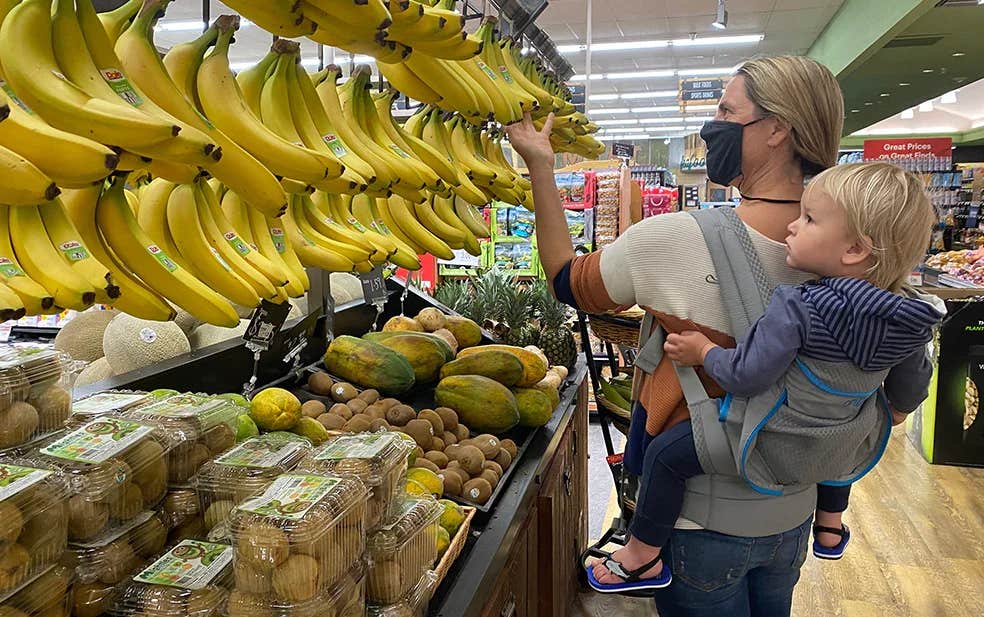Bananas could be the silver bullet against all human-infecting coronaviruses
Researchers created a new banana-derived therapy effective against COVID-19, flu, and MERS. Potential applications extend to cancer treatment

When COVID-19 occurred, we of course wanted to study the therapy’s potential and discovered it was effective against every type of coronavirus, in vitro and in vivo. (CREDIT: CC BY-SA 3.0)
On January 13, 2020, a groundbreaking paper introduced a potential therapy that could fight all known strains of the flu. Just a week later, the first confirmed case of SARS-CoV-2 marked the start of the COVID-19 pandemic in the U.S., overshadowing other medical research. Interestingly, the team behind this flu therapy had also been investigating a similar approach to treat coronaviruses.
David Markovitz, M.D., professor at the University of Michigan Medical School, shared that their original focus was MERS (Middle Eastern Respiratory Syndrome) due to its high mortality rate of 35%. MERS had caused a brief but deadly outbreak in 2015, leading to 858 confirmed deaths. At the time, the team believed MERS could pose a major threat.
Their research on a new therapy was recently published in Cell Reports Medicine. The study showed the therapy, known as H84T-BanLec, to be effective against all human-infecting coronaviruses, including MERS, the original SARS, and SARS-CoV-2. Notably, this also includes the Omicron variant.
Markovitz worked alongside Peter Hinterdorfer, Ph.D., of Johannes Kepler University, and Kwok-Yung Yuen, MBBS, M.D., of the University of Hong Kong. The paper’s first author was Jasper Fuk-Woo Chan, M.D., from the University of Hong Kong.
Markovitz explained that once COVID-19 emerged, the team quickly shifted focus to test their therapy against the virus. “We discovered it was effective against every type of coronavirus, in both lab tests and animal models,” he said. “Whether administered systemically or through the nose, whether used early in illness or as a preventative, it worked.”
H84T-BanLec comes from a protein known as a lectin, which is extracted from banana fruit. Lectins are proteins that bind to carbohydrates, and in this case, H84T-BanLec attaches to a type of carbohydrate called high-mannose glycans. These glycans are found on the surface of viruses but are rare on healthy human cells. Once H84T-BanLec binds to the virus, it blocks the virus from entering cells and spreading infection.
Related Stories:
Using sophisticated tools like atomic force microscopy, the research team confirmed that H84T-BanLec forms multiple strong bonds with the spike protein of coronaviruses. Markovitz explained that these bonds likely make it difficult for the virus to develop resistance to the therapy.
Lectins, despite their antiviral potential, have typically been avoided in therapeutic research because they can trigger harmful immune responses. However, H84T-BanLec has been modified to avoid this issue, and it showed no harmful side effects in animal models.
While there are existing treatments for COVID-19, such as remdesivir, Paxlovid, and monoclonal antibodies, they come with various limitations. Some have side effects, and many have become less effective as SARS-CoV-2 continues to evolve into new variants. H84T-BanLec stands out because it has shown effectiveness against all tested variants of the virus and even against different strains of influenza.
The research team is hopeful that H84T-BanLec can eventually be tested in humans, a critical step in bringing this therapy to wider use. They envision it as a nasal spray or drops that could be used to prevent or treat infections during both seasonal and pandemic outbreaks of respiratory viruses.
The potential applications of H84T-BanLec may even extend beyond viruses. Because cancer cells also display high-mannose glycans on their surfaces, the researchers hope to explore whether the therapy could be adapted to target certain cancers as well.
The ability of H84T-BanLec to bind to a wide range of coronaviruses and flu strains gives it a unique edge in fighting future pandemics. While current therapies lose effectiveness as viruses evolve, this therapy’s method of targeting the virus’s surface proteins might help maintain its efficacy.
In the wake of COVID-19, many treatments have been developed, but the emergence of new variants has complicated the fight against the virus. Having a therapy like H84T-BanLec, which works across a range of virus types, could provide a more reliable tool for battling not only COVID-19 but also future outbreaks of coronaviruses and flu.
The hope now is to bring this therapy from the lab and animal models to clinical trials in humans. If successful, it could revolutionize how respiratory infections are treated, offering a new line of defense against seasonal flu, coronavirus pandemics, and even cancer.
Additional authors include Yoo Jin Oh, Shuofeng Yuan , Hin Chu , Man-Lung Yeung , Daniel Canena , Chris Chung-Sing Chan, Vincent Kwok-Man Poon, Chris ChunYiu Chan, Anna Jinxia Zhang, Jian-Piao Cai , Zi-Wei Ye , Lei Wen, Terrence Tsz-Tai Yuen, Kenn Ka-Heng Chik, Huiping Shuai, Yixin Wang, Yuxin Hou, Cuiting Luo, WanMui Chan, Zhenzhi Qin, Ko-Yung Sit, Wing-Kuk Au, Maureen Legendre, Rong Zhu, Lisa Hain , Hannah Seferovic, Robert Tampé, Kelvin Kai-Wang To, Kwok-Hung Chan, Dafydd Gareth Thomas, Miriam Klausberger, Cheng Xu , James J. Moon, Johannes Stadlmann, Josef M. Penninger, and Chris Oostenbrink. Thomas, Xu, Moon and Legendre are all from the University of Michigan.
Note: Materials provided above by The Brighter Side of News. Content may be edited for style and length.
Like these kind of feel good stories? Get The Brighter Side of News' newsletter.
Joseph Shavit
Head Science News Writer | Communicating Innovation & Discovery
Based in Los Angeles, Joseph Shavit is an accomplished science journalist, head science news writer and co-founder at The Brighter Side of News, where he translates cutting-edge discoveries into compelling stories for a broad audience. With a strong background spanning science, business, product management, media leadership, and entrepreneurship, Joseph brings a unique perspective to science communication. His expertise allows him to uncover the intersection of technological advancements and market potential, shedding light on how groundbreaking research evolves into transformative products and industries.



